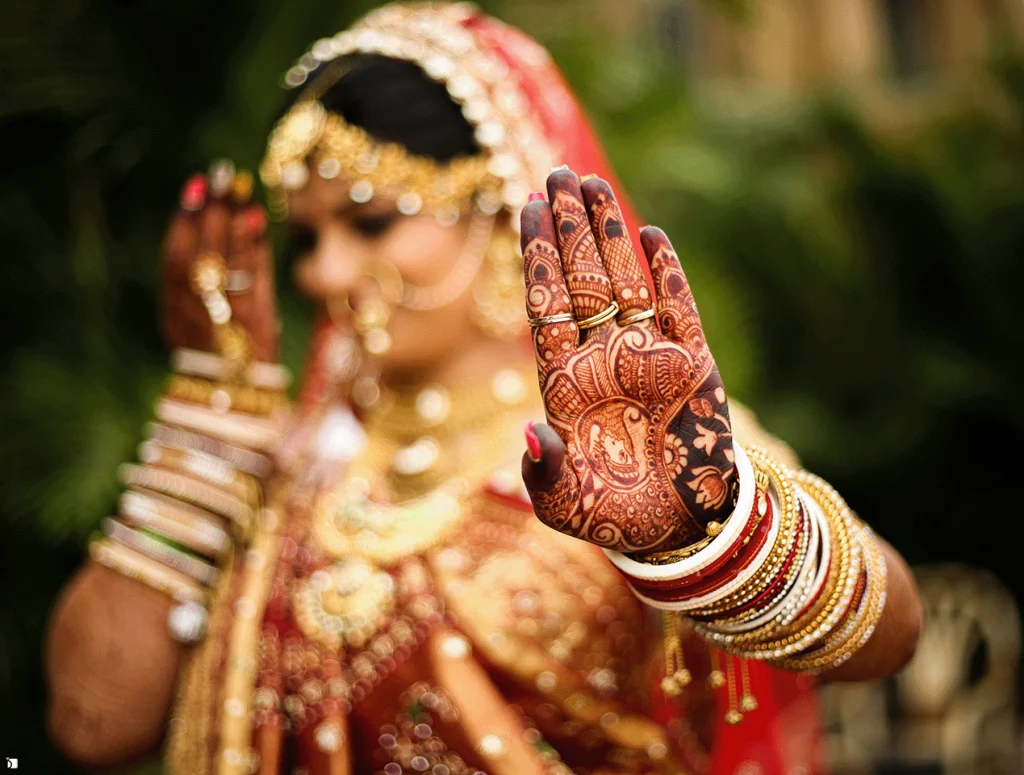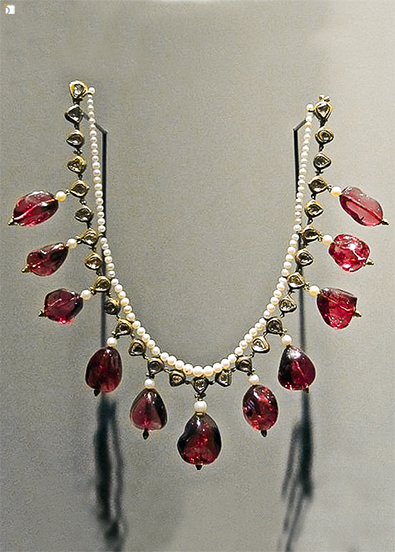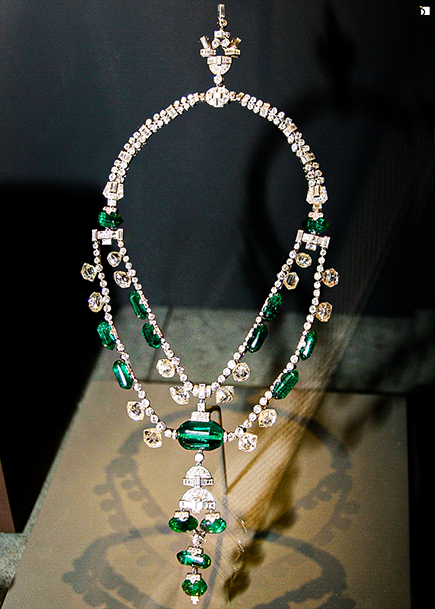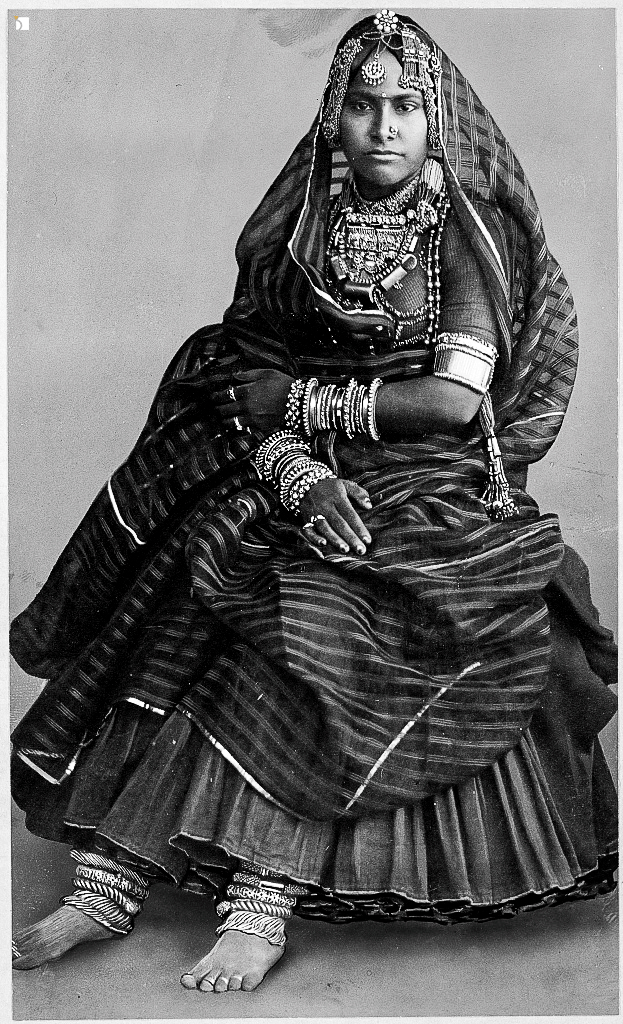The History of Jewelry Around the World Series
To take a closer look at the history of Indian jewelry, we have to go back around 5,000 years — to the beginning of the history of the country itself.
In India, jewelry has been a symbol of tradition and is enjoyed for its aesthetic value. However, jewelry has also represented stability and security, especially during times of financial strain. Jewelry from this region has always been unique in its design as well as the craftsmanship involved in creating such intricate pieces. Jewelry has been a surefire way to add to an individual’s status as well as riches associated with a given person’s name.

Jewelry has been used in India to help accentuate intricate dances such as the Kuchipudi, Kathak, and the Bharatnatyam. Dancers were embellished with jewelry nearly head to toe. Places like the Golconda region and Burma are known for large, flawless diamonds and deep red rubies. In India, entire wars have been fought, won (or lost) mostly in pursuit of these sorts of riches.
However, unfortunately, very few relics exist today as it was common practice to repurpose gemstones and precious metals.
Jewelry as a Religious Tribute
The Mughal Empire, originally from Central Asia made their way into India, lured by the legendary riches offered in Northern India. Babur, the Muslim founder of the Mughal Empire, adorned himself lavishly with jewels captured through conquering. Jewelry and gemstones were given as gifts and created from vast stores of gems and gold.
The Mughals and other rulers of India used jewelry to honor religion, the metaphysical, as well as to convey social importance.

Jewelry pieces themselves were intricately designed and praised/celebrated Muslim and Hindu Gods including Allah, Vishnu, Krishna, and Shiva. Jewelry was also an important aspect involved in marriage. Jewelry made in the likeness of fish and snakes symbolized fertility, for instance. Nose rings were worn as an indicator of happiness in a marital union.
Bright-colored gemstones represented important life forces – red represented the blood, green represented plant life, blue represented the sky and the ocean, and yellow represented the sun. Even to this very day, gemstones convey powerful messages of honor, power, and love.


1800–50, South India¹
World-Class Diamonds
Some of the world’s most celebrated and infamous diamonds have come from India, including the Hope Diamond as well as Koh-i-Noor, which originated from the famous Golconda mining area. The aristocracy of India kept the choice gems for themselves and traded whatever was leftover for rubies, sapphires, emeralds, pearls, and spinel. The Golconda mining region is nowadays largely exhausted but has made its mark on jewelry history with no less than 12 million carats mined over the course of 2,000 years.
India also knew how to appreciate gemologists, who were considered valuable members of the highest royal courts of India. Famously, a Mughal Emperor by the name of Aurangzeb (1658-1707) had three gemologists in his entourage, one to care for gems, one to estimate value and the last to identify counterfeits.
Ruby and Spinel in India
Two major gems in India include ruby and spinel. You likely already have a familiarity with rubies, however, spinel has long been mistaken for ruby, even by emperors and monarchs alike.
Spinel can be found in a variety of colors, which include red, violet, and even dark green. Early red gemstones were predominantly spinel carried over the mountains of Badakhshan. Rubies were found in Afghanistan and primary deposits available in Mogok were not unearthed until the 19th century.

1607 – 1619²

17th – 20th Century³
Emeralds of India
The most coveted green gem in India happens to be emerald, and rightfully so. Early emeralds were brought to India from Egypt’s iconic Cleopatra’s Mines, first found in the hills by the Red Sea.
Merchants ended up transporting emeralds from South America, traveling across the Atlantic Ocean into Spain. Emeralds were brought by Portuguese merchants to Goa, a coastal trading center in India. One British trader reported that Shah Jahangir boasted over half a million carats of unmounted emeralds in his treasury. Today, Jaipur is considered the world’s emerald cutting center.
The journey of jewelry in India is one that echoes in current times. Craftsmen from India have perfected the art of cutting and polishing precious gemstones throughout the ages. Perhaps the best part about Indian jewelry history is that it can be enjoyed through the pieces that exist today. In our modern world, traditional jewelry styles of India are still worn all over the world today.
If you have jewelry from any region or from just about any historical period that needs repair or upkeep, My Jewelry Repair is here to help. Get in touch with us today to learn more about who we are, what we do, and how we can keep your jewelry pristine without you having to lift a finger.


RESOURCES:
Centuries of Opulence: Jewels of India (gia.edu)
Cultural India: History of Indian Jewelry and its Origin
¹ Original Image “Gold Set with Diamond, Ruby, and Spinel – 1800–50, South India”
² Original Image “Necklace – India – 1607 – 1619”
³ Original Image ““Spanish Inquisition Necklace” – India – 17th – 20th century”

My Jewelry Repair
Continuing the History of Jewelry
India contributed greatly to our rich history of jewelry and accessorizing. When it comes time to giving your jewelry, watches, and other accessories the TLC they need to shine through the ages, My Jewelry Repair is here with our iron-clad mail-in repair service.
Contact us today to learn more about our easy online jewelry and watch repair service!
